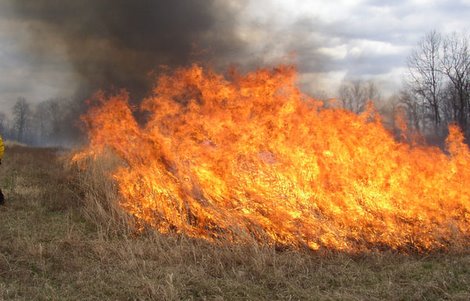
Habitat (plant) response after a fire is influenced by the intensity of the fire, condition of plants at the time of burn, weather conditions, and grazing management decisions following the fire. However, fire effects differ depending upon rainfall, fuel quantity, and length of the growing season.
Several factors that determine a fire’s intensity are fuel quantity and continuity, air temperature, humidity, wind speed, soil moisture, and direction of the flame front movement relative to the wind direction. Keep all of these factors in mind when planning a safe and effective burn to improve your deer habitat.
Generally, the intensity of a fire increases with greater quantity and continuity of fuel, higher temperature and wind speed, and lower humidity and soil moisture. In addition, a fire set to move in the same direction as the wind (headfire) tends to be more intense than a flame moving against the wind (backfire).

Controlling the fire’s intesity through correct firing techniques under appropriate conditions is a key factor in achieving the desired responses from a prescribed burn.
An equally important factor to consider when planning a burn to accomplish specific objectives is the stage and type of growth of desirable and target species. For example, the growth stage of forbs at the time of the burn greatly affects the current and following year’s production. Forbs are prolific seed producers, but an untimely fire can destroy forb seed production and important white-tailed deer food.
Forb seedlings are highly susceptible to fire. Therfore, a late winter burn after many annuals have germinated reduces their population. Burns conducted in early to mid-winter with good soil moisture results in late winter annuals and allows rapid recovery of perennials, and is probably more beneficial for deer. However, I suggest burning some of your designated burn areas in early winter and some in late winter to keep a diversity of habitat.

